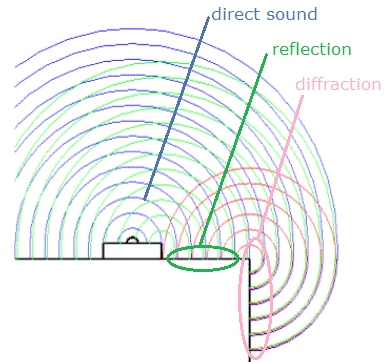@mrskeptic: Paul McGowan is the founder of PS Audio. Is he a "scientist"? Certainly not. Is he a blow-hard? Yes. His "books" are full of dubious and self-serving claims, as are many of his too many Youtube videos. I also know people in the business who have expressed skepticism about him for various troubling reasons. However, many regard PS Audio as a serious audiophile manufacturer, and McGowan’s videos as sources of well-informed advice ("well-informed" meaning: lots of industry experience in high-end audio; that cuts several ways, of course). I own one of his earlier DACs, and love it. Make of his advice what you will.
Now, I’m not an acoustician. But I do have a lot of education (make of that what you will as well), and I’ve published on issues in contemporary physics. As I understand it, sound absorption works by converting the energy of sound waves into heat energy. So, no, wood does not absorb sound until it "can hold no more" at which point the sound either "leaks out" or the wood "explodes." Anyone with the tag "mrskeptic" should be ashamed at such silliness. The way sound absorption works, in terms of physics, is well understood and explained in many available places.
As for whether or not softer woods would absorb more than harder woods—I admit my ignorance on this, but it does make physical sense. In general, softer materials (pillows, heavy carpets, foam, acoustic panels, etc.) do, in fact, absorb more than harder, "reflective" materials (dry wall, plaster, glass).
As for @jeffseight’s caution that the DIY diffusion panels I described "will be heavy"—well, they can be (with hard, heavier woods like walnut attached to heavy acoustic panels that are large). But smaller panels made from lighter (softer) woods, like pine, attached to lighter boards, are not prohibitively heavy. Too heavy to mount with double-stick tape, but not at all too heavy for other sorts of methods (such as are used for hanging even large and very heavy framed pictures).
Finally, yeah, all this is tweaking, and usually unnecessary. Or...it can make a bigger difference than an expensive new component. FWIW, I totally agree with @redlenses03: room acoustics is one of the very most important elements in getting good sound. I’ve posted about this at length elsewhere on this forum (regarding concert halls, in particular, with respect to the recent renovation of Avery Fisher/Geffen Hall in NYC). The Number One element in good sound, however, is the quality of the original recording. There are plenty of "experts" who will second that opinion. Speakers are No. 3. After that, it’s all tweaks. Even amplification, so long as it’s sufficiently powerful not to be driven into clipping, has been empirically shown to be of relative unimportance. As for cables and power cords.... Of course, many on this forum don’t believe in empirical demonstrations. I hope, when you get sick, you don’t avoid empirically minded physicians, or disregard "measurements" when it comes to "high performance" vehicles. Science works. It’s not the endpoint of audiophilia, but it is certainly not irrelevant.


